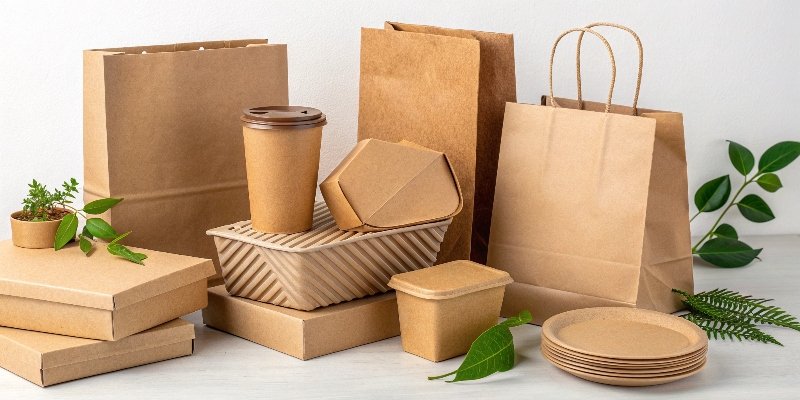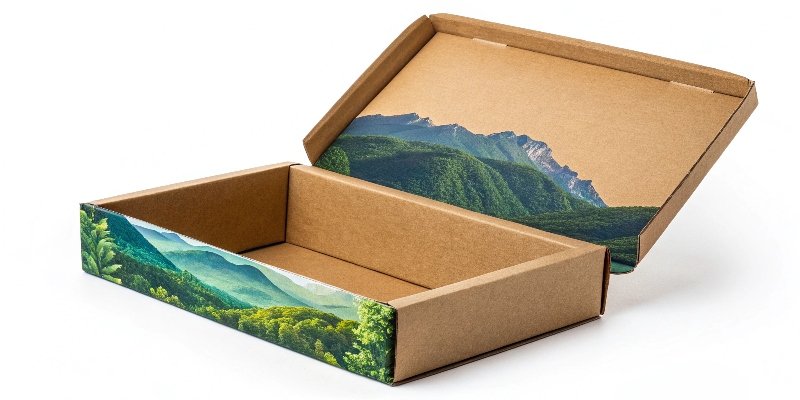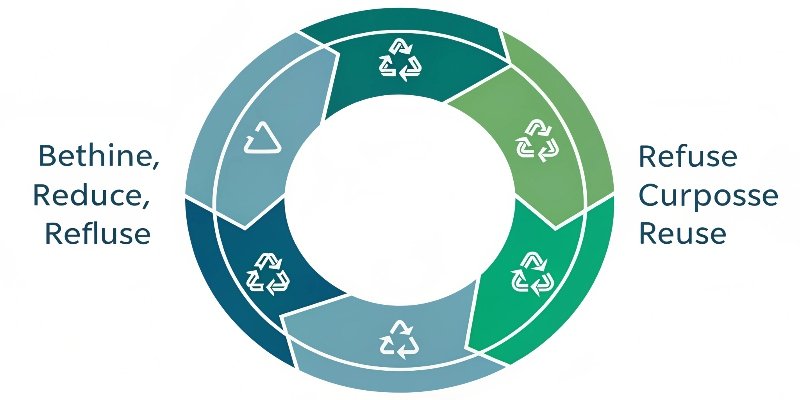Your customers demand eco-friendly products, but sustainable packaging seems complex and costly. This pressure can lead to greenwashing fears. But shifting to sustainable practices is within your reach.
The most effective sustainable packaging approaches focus on the entire lifecycle. This means choosing renewable or recycled materials, designing to minimize waste (right-sizing), and ensuring the package can be easily reused or recycled after use. It is a holistic view, not just about one material.

That gives you the basic idea. But you're likely asking what specific actions you can take to make a real difference. True sustainability goes beyond just picking a "green" material. It involves a shift in how we think about packaging from the very start. Let's dive into the practical solutions and frameworks you can use today to improve your packaging's environmental impact1 and meet customer expectations.
What are the sustainable solutions to packaging?
You know you need sustainable packaging solutions. But the market is filled with options, making it hard to choose. Here are some of the most practical and effective solutions available.
Key sustainable solutions2 include using materials like FSC-certified paper, recycled plastics (rPET), and compostable bioplastics3 (PLA). Other innovative options are mushroom or seaweed packaging. The best choice always depends on your specific product, brand goals, and local recycling capabilities4.
[^5] ready for printing.](http://gifts-pack.com/wp-content/uploads/2025/08/key-sustainable-solutions-include-using-material.jpg)
In my 16 years in this industry, I have seen many materials come and go. The ones that stick are practical and effective. It's about finding the right fit for your project. As a designer, understanding these material choices is your first step.
Material Deep Dive
Choosing the right material is the foundation of sustainable design5. Your choice affects everything from production energy to what happens to the package after it is used. Let's look at some of the most common solutions we work with at Giftspack.
| Material | Source | Best For | End-of-Life |
|---|---|---|---|
| FSC-Certified Paper | Responsibly managed forests | Boxes, bags, labels | Widely recyclable, compostable |
| Recycled PET (rPET) | Recycled plastic bottles | Clamshells, bottles, trays | Recyclable |
| Polylactic Acid (PLA) | Corn starch, sugarcane | Food containers, films | Industrially compostable |
| Mushroom Packaging | Mycelium (mushroom roots) | Protective inserts | Home compostable |
For many of the luxury and retail boxes we create, FSC-certified paper6 is our go-to recommendation. It provides a premium look and feel. It also gives our clients confidence that they are not contributing to deforestation. It’s a balanced choice between quality, function, and responsibility.
How to make your packaging more sustainable?
You have existing packaging and want to make it greener. A complete redesign sounds expensive and time-consuming. But you can make a huge impact with small, smart adjustments.
You can make your packaging more sustainable by first reducing the amount of material used through "right-sizing7." Next, switch to mono-materials for easier recycling. Also, use eco-friendly inks and avoid unnecessary plastic coatings to improve your package’s overall environmental profile.

Making your packaging sustainable is a process of optimization. It’s not about finding one magic bullet. It is about making a series of better choices. I've guided many clients through this process. We find that focusing on a few key areas delivers the best results without disrupting their entire operation.
A Three-Step Optimization Plan
Let's break down how you can improve your current packaging. These are practical steps you can discuss with your packaging partner today.
1. Right-Size Everything
This is the easiest win. Many packages are bigger than they need to be. This wastes material and increases shipping costs because you are transporting air. I remember a client who sold small electronics. We redesigned their mailer box to fit the product snugly. We cut their material use by 30% and their shipping costs by 15%. This simple change had a massive impact on their bottom line and their carbon footprint. Always ask: can this box be smaller?
2. Simplify Your Materials
Many packages mix materials. A paper box with a plastic window or a magnetic closure is a good example. These mixed materials are very difficult to recycle. The recycling facility has to separate them, which often does not happen. The entire package ends up in a landfill. The solution is to use "mono-materials8." Design a box that is 100% paperboard. If you need a window, consider a die-cut opening instead of a plastic film. Simple is almost always more sustainable.
3. Choose Greener Finishes
The final touches matter. Glossy plastic lamination looks nice, but it makes a paper box non-recyclable. Consider a water-based varnish instead to get a similar effect. Also, ask your printing partner about soy-based or water-based inks. They are much less harmful to the environment than traditional petroleum-based inks. These small details show a true commitment to sustainability.
What are the 7 R's of sustainable packaging9?
You hear terms like "circular economy10" but they feel too academic. You need a simple framework to guide your design choices. The 7 R's provide that clear, easy-to-follow checklist.
The 7 R's of sustainability are a hierarchy of actions: Rethink, Refuse, Reduce, Reuse, Repurpose, Recycle, and Rot. They guide you from questioning the need for packaging entirely to choosing materials that can be composted.

I use this framework with my team at Giftspack. It helps us challenge our own assumptions and push for more creative solutions. Instead of starting with "What material should we use?", we start with "Rethink". This simple shift in thinking leads to much more innovative and responsible packaging designs. This is a very practical tool for any designer.
Using the 7 R's in Practice
This is more than just a list. It's a way of thinking. Let's look at how each 'R' applies to packaging design.
- Rethink: This is the most important step. Question everything. Does this product even need a box? Can we sell it with just a tag? Can we combine the shipping box and the product box into one?
- Refuse: Say no to unnecessary packaging components. Refuse to use single-use plastic wraps or filler materials when a better design could make them redundant.
- Reduce: This connects back to right-sizing7. Use less material. Make walls thinner where possible. Remove unnecessary layers or inserts.
- Reuse: Can the package be used again by the customer? We once designed a beautiful rigid box for a luxury candle. The design allowed customers to use it as a jewelry or keepsake box long after the candle was gone. This extends the life of the packaging and adds value.
- Repurpose: How can the packaging be used for something different? A cleverly designed box could be repurposed as a desk organizer or a planter for seedlings.
- Recycle: If the package cannot be reused, make sure it can be easily recycled. Use mono-materials8 that are widely accepted by recycling programs. Add clear recycling instructions for the customer.
- Rot: This is for compostable materials. If your product is going to be used in a setting where industrial composting11 is available (like a stadium or a cafeteria), a compostable material like PLA might be a great choice. But be careful. If this infrastructure doesn't exist, the package will end up in a landfill.
What is the most sustainable form of packaging?
Everyone is searching for the single most sustainable packaging9 material. This quest for a perfect solution can be paralyzing. The simple answer is, there isn't one.
Often, the most sustainable packaging is no packaging at all. When that isn't an option, the "best" material depends entirely on the product, its supply chain, and the disposal systems available where the customer lives.

This is the hardest question I get, and the most important one to understand. There is no universal "best." Believing there is can lead to poor choices. For example, a brand might switch from a lightweight, hard-to-recycle plastic pouch to a heavy, recyclable glass jar. The jar feels more sustainable. But making and shipping that heavy glass might create more carbon emissions than the pouch did. Context is everything.
Why "It Depends" is the Right Answer
The search for a single best material is flawed. A truly sustainable choice requires thinking about the entire system. Here is what you need to consider.
Context is King
Let's compare two options for a liquid product. A glass bottle is heavy, so it costs more in fuel to transport. It also takes a lot of energy to create and recycle. But, it is widely recycled in many countries. A flexible plastic pouch is very lightweight, saving a lot of fuel during transport. But it is almost impossible to recycle in most places. Which is better? The answer depends on your priorities. Is lowering your carbon footprint from transport more important? Or is ensuring recyclability more important? It's a trade-off.
The Lifecycle View
Professionals use a method called a Life Cycle Assessment (LCA)12 to answer this question. An LCA measures the environmental impact1 of a package from the very beginning (sourcing raw materials) to the very end (disposal or recycling). It looks at energy use, water use, emissions, and waste. You don't need to do a full LCA for every project. But you should adopt its way of thinking. Think about the entire journey of your package, not just the final material.
My Professional Opinion
After years of working with hundreds of brands, I believe that for most retail and gift products, paper-based packaging is an excellent and balanced choice. Materials like FSC-certified paper6board come from a renewable resource. They are lightweight. And they are widely and easily recycled around the world. At Giftspack, this is often our starting point because it provides a reliable, responsible, and high-quality solution for our clients.
Conclusion
Sustainability is not about finding a perfect solution. It is a journey of making better choices every day. Start small, reduce where you can, and always consider the package's entire lifecycle.
-
Discover how your packaging decisions can significantly influence environmental sustainability. ↩ ↩
-
Discover innovative solutions that can help you achieve sustainable packaging goals. ↩
-
Discover how compostable bioplastics can contribute to sustainable packaging solutions. ↩
-
Understand the importance of local recycling capabilities in selecting sustainable packaging. ↩
-
Explore the key principles of sustainable design that can guide your packaging decisions. ↩
-
Learn about the significance of FSC-certified paper in promoting responsible forestry. ↩ ↩
-
Understand how right-sizing can minimize waste and reduce shipping costs. ↩ ↩
-
Find out how using mono-materials can simplify recycling processes and enhance sustainability. ↩ ↩
-
Explore effective strategies for sustainable packaging that can enhance your brand's eco-friendliness. ↩ ↩
-
Understand the concept of a circular economy and its impact on sustainable packaging. ↩
-
Learn about industrial composting and its role in sustainable packaging solutions. ↩
-
Learn how LCAs can help evaluate the environmental impact of packaging choices. ↩






